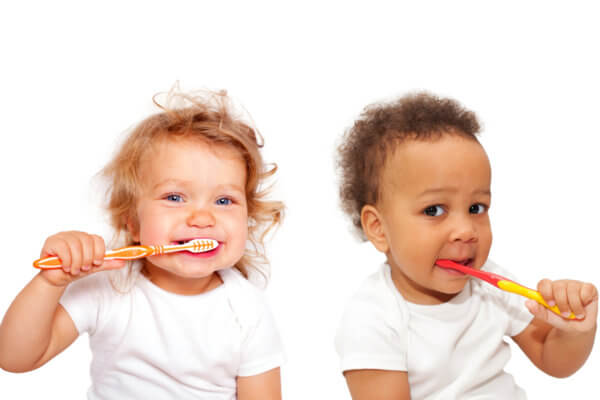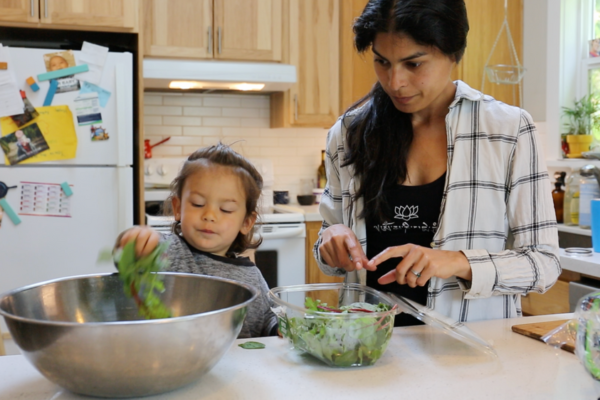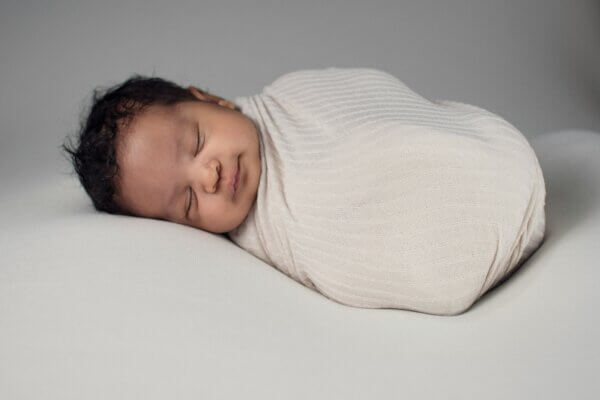Dental Care: Another thing I’m behind on
My baby has just turned 6 months old. SIX MONTHS OLD! How did this happen? Where did the time go? All of sudden last week his first little tooth popped through his gums. And now there’s another one right behind it. It’s time to start thinking about infant dental care.
At first I was relieved. This is why he’s been having trouble staying asleep lately. Bingo! Then, I panicked. I should have been brushing his gums. Don’t they say to start that at 4 months? Wasn’t he just 4 months old? Then the flood of other things I “should” have done, or not done…
Don’t let baby fall asleep with milk in their mouth.
Massage their gums with clean fingers, damp cloth or a soft brush after feedings (even before first tooth appears).
Brush baby’s teeth once first tooth appears, twice a day.
So, I’m behind as usual. Where did I put that handy finger brush my cousin gave me at the baby shower? Don’t I need to make a dentist appointment? Once that first tooth appears, it’s time. This means I need to find a pediatric dentist. One more to do.
The list keeps getting longer.
In fact, writing this blog is stressing me out.
I hope my stress is not contagious like the bacteria in my mouth that cause cavities. Did you know that we actually pass this onto our little ones? It’s not going to keep me from kissing him of course. Seriously, the slobber kisses are the best.
But to get real for a minute, here are some quick tips from my research:
First, how are cavities formed?
Tooth decay develops when a baby’s mouth is infected by acid-producing bacteria (called Mutans Streptococci). Parents and caregivers can pass bacteria to babies through saliva. This bacteria feeds on carbs and simple sugars and literally poops acid onto the teeth – yuck! This acid lowers the PH of the mouth and in turn, causes decay. It’s not just sugary drinks and food that leads to cavities but carbs too. For every carb/sugar we consume, there’s a 20 min PH change. It’s the frequency, not necessarily the amount we consume.
Tips to keep your baby’s teeth clean and cavity-free. YES, it’s preventable!
Wipe/massage the gums
Start this before teeth come in and brush teeth after they appear to remove plaque and bacteria. This helps to avoid tooth decay and gets them used to having their mouth cleaned.
Don’t let your baby fall asleep with milk in their mouth
This could be on the boob or with a bottle that has anything sweet in it (milk is also sweet). This is definitely not going to happen with my guy. He falls asleep while breastfeeding pretty much every night. Sometimes best practices don’t fit with our reality.
Carbs or juice should be limited to mealtimes
If they sip juice (even watered down) or munch on cheerios all day – this is like a constant acid bath to the teeth.
No fluoride toothpaste
You can use a tiny tiny bit of toothpaste (rice-sized) when brushing baby’s teeth – but avoid fluoride until 2 or 3 years old – or when they’ve learned to spit it out. Note: Information is conflicting on when to start using fluoride. I’ve found both 2 or 3 years from the sources listed below. Some families may also choose not to use fluoride, or wait until Elementary school, but dental health professionals recommend it. You decide.
Children should have their first dental visit by age 1
It’s time to find that pediatric dentist and make the appointment.
Keep up with your own dental appointments
Even though just washing your hair can feel impossible with a new baby, make sure to prioritize YOUR dental care too! It’s important for parents to be cavity-free. This lowers the number of bad bacteria in our mouths, thereby lowering the chances of passing it onto our little ones.
For our older kids, recommendations from Lindsay P, Dental Hygienist:
We recommend parents brush for their children until 9/10 years old. Which is sometimes a shock. Learning to brush teeth is an important skill that builds independence and capability, so definitely give them the opportunity to try first. After they brush, a parent should be going in to ensure complete plaque removal. Most kids’ brains don’t develop the coordination of spatial function (where their hand is in their mouth and ability to move the brush in the correct manner) until 9 or 10. They just can’t process how to brush the inside and outside surfaces of their teeth, as well as an adult, does. We see a significant difference in the amount of decay and gingivitis present in kids who are left to their own devices vs a parent who is involved with the process. Once a day flossing and twice a day (for two minutes) brushing is ideal.
For more great info, check out these links:
UW Center for Pediatric Dentistry
Washington Dental Service Foundation
American Academy of Pediatrics, healthychildren.org





Comments